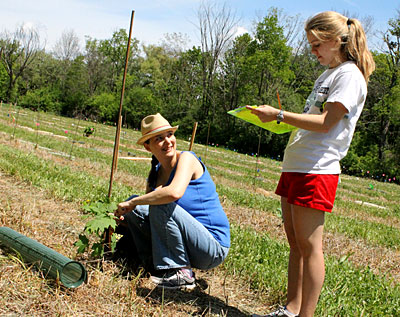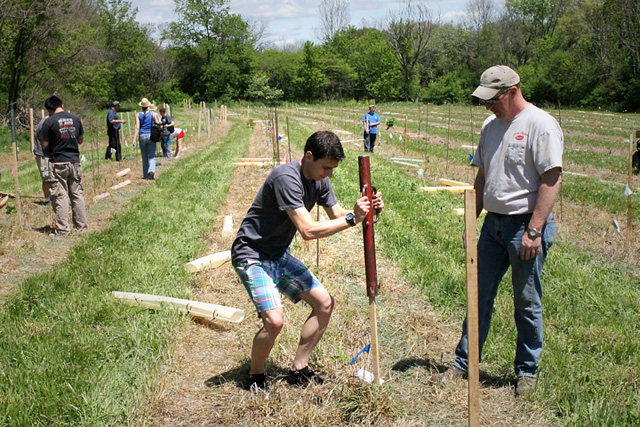
From Anja Timm, Cornell University Agricultural Experiment Station.
More than 30 volunteers from Cornell University and George Junior Republic School planted about 800 trees on two acres at Cornell’s Homer C. Thompson Vegetable Research Farm in Freeville, N.Y., May 18. Cornell University Agricultural Experiment Station (CUAES) and Cornell’s Department of Natural Resources hosted the tree-planting party.
The planting is part of a research project evaluating six methods of protecting saplings from browsing deer, including different tubes, liners and bud caps. As volunteers planted the white oak, sugar maple, and black locust seedlings, they measured, staked and tagged them, and the trees’ growth will be carefully tracked over the next few years.
“The goal of the research is to help landowners and managers find the most economical and sustainable ways to protect vulnerable trees from deer when replanting forestland or establishing windbreaks,” says Peter Smallidge, State Extension Forester with the Department of Natural Resources, who leads the project.
The applied research project will be used in extension programming to provide guidance to foresters, maple producers, woodlot owners, and farmers. Tree planting is a popular activity, and the mix of species is linked to the diverse interests of owners and managers throughout New York.
Nick Vail and growers in CUAES’s Caldwell greenhouses grew the year-old seedlings for the trial.
More information about tree planting from the Department of Natural Resources: Northeastern Tree Planting & Reforestation



